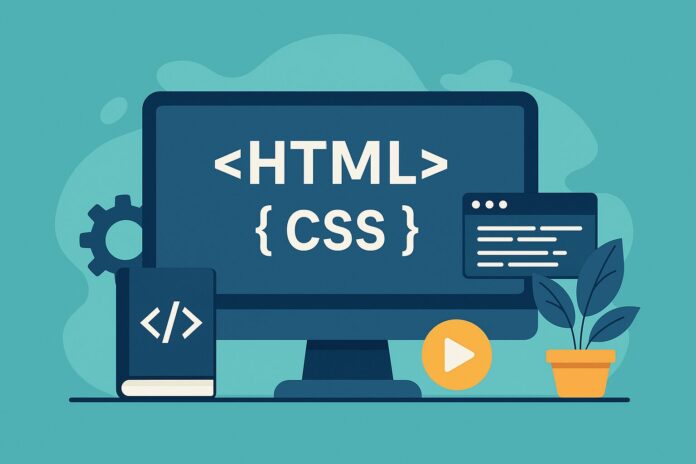Table of Contents
- Introduction to Combining Flexbox and Grid
- Key Differences Recap: Grid vs Flexbox
- When to Use Grid and When to Use Flexbox
- Real-World Scenarios That Use Both
- Nesting Flexbox Inside Grid
- Nesting Grid Inside Flexbox
- Responsive Design Strategy Using Both
- Best Practices
- Summary
1. Introduction to Combining Flexbox and Grid
CSS Grid and Flexbox are two powerful layout systems, each excelling in different use-cases. While Grid is great for creating two-dimensional layouts (rows and columns), Flexbox is excellent for one-dimensional layouts (either row or column).
In real-world projects, you’ll often need to combine both for the most flexible and maintainable layouts.
2. Key Differences Recap: Grid vs Flexbox
| Feature | Flexbox | Grid |
|---|---|---|
| Layout Direction | One-dimensional (row OR col) | Two-dimensional (row AND col) |
| Alignment | Along main/cross axis | Along rows/columns |
| Content-Driven | More suitable | Needs explicit sizing (usually) |
| Use Case | Components/UI items | Full-page layouts |
Understanding this helps you decide which tool to use where.
3. When to Use Grid and When to Use Flexbox
| Scenario | Preferred Layout System |
|---|---|
| Full-page layout with header/sidebar | Grid |
| Navigation bar with evenly spaced items | Flexbox |
| Cards in a responsive grid | Grid (with auto-fit) |
| Vertically centering an item | Flexbox |
| Form with multiple input rows | Grid |
| Group of buttons | Flexbox |
4. Real-World Scenarios That Use Both
Example: Dashboard Layout
- Use CSS Grid for the overall layout (header, sidebar, content).
- Use Flexbox inside header for horizontal alignment (logo + nav).
- Use Grid in main content to show cards.
- Use Flexbox inside each card to align content vertically.
5. Nesting Flexbox Inside Grid
This is a common and effective pattern. Let’s say you have a grid layout for your main structure and need to align elements within grid cells using Flexbox.
HTML
<div class="grid-container">
<div class="card">
<div class="card-content">
<h2>Title</h2>
<p>Description</p>
<button>Read More</button>
</div>
</div>
</div>
CSS
.grid-container {
display: grid;
grid-template-columns: repeat(auto-fill, minmax(300px, 1fr));
gap: 20px;
}
.card-content {
display: flex;
flex-direction: column;
justify-content: space-between;
height: 100%;
}
Here, the outer layout uses Grid and the card uses Flexbox for internal vertical spacing.
6. Nesting Grid Inside Flexbox
You can also use Grid inside Flex containers when you want structured two-dimensional alignment inside a Flexbox-driven layout.
Example:
<div class="flex-row">
<div class="info-grid">
<div>Item A</div>
<div>Item B</div>
<div>Item C</div>
<div>Item D</div>
</div>
</div>
.flex-row {
display: flex;
justify-content: center;
align-items: center;
}
.info-grid {
display: grid;
grid-template-columns: repeat(2, 1fr);
gap: 10px;
}
This technique is useful when, for example, you want a centered box with two-column layout inside.
7. Responsive Design Strategy Using Both
Combining Flexbox and Grid gives you greater control in responsive designs.
Example Strategy:
- Use Grid to define breakpoints and major areas.
- Use Flexbox inside each area to align content naturally.
@media (max-width: 768px) {
.grid-container {
grid-template-columns: 1fr;
}
.card-content {
flex-direction: column;
}
}
8. Best Practices
✅ Use Grid for the skeleton layout (header, footer, sidebar, main).
✅ Use Flexbox inside components for item alignment.
✅ Avoid deeply nesting layouts unless necessary.
✅ Use auto-fit, minmax(), and media queries for responsiveness.
✅ Keep layout logic in CSS and avoid relying on unnecessary wrappers.
✅ Debug layouts using browser DevTools (toggle Flex/Grid overlays).
9. Summary
Combining Flexbox and Grid lets you create highly responsive, clean, and modular layouts. Grid handles macro-level layouts, while Flexbox handles micro-level alignment inside those layouts.
By mastering both and understanding where each shines, you gain complete control over page structure and responsiveness, making you a highly effective frontend developer.


